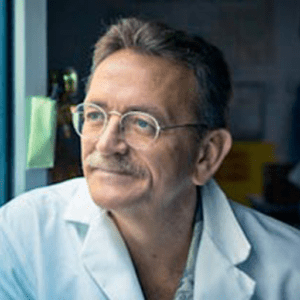About Us
Hesperos, Inc. is accelerating drug discovery by providing safety and efficacy testing of chemicals and novel therapeutics for the pharmaceutical, cosmetic, and food industries using its patented, Human-on-a-Chip platform. Bringing together biologists, surface chemists, and engineers, our team is producing some of the worlds most advanced organs-on-a-chip platforms. From gene expression to electrophysiology, we recreate key components of organs in an interconnected, functional system. Chemically patterned microchips enable real-time, non-invasive monitoring of organ activity where we use sophisticated measurement techniques to detect minute changes.
This breakthrough technology enables unprecedented visibility into specific disease states and how the human body will respond to treatment - something that previously required costly animal testing and human trials to determine. As a functional, interconnected, human surrogate, Hesperos’ Human-on-a-Chip provides preclinical insight into the efficacy and toxicity of novel therapeutics.
Our Mission & Vision
Our mission is to accelerate drug development by providing safety and efficacy data of chemicals & novel therapeutics for the pharmaceutical, cosmetic, and food industries.
We aim to enable a world where every disease has a treatment, every patient has hope, and animals are no longer used for chemical testing or drug discovery.
Meet the Founders
Hesperos brings together biologists, surface chemists and engineers in a highly collaborative, multi-disciplinary environment. This gives us an ability to study therapeutics in a way which was previously only possible in clinical trials.

Michael Shuler, PhD
President & CEO

James J. Hickman, PhD
Chief Scientist
Our Story
Early 1990's
Hesperos CEO, Michael Shuler, was the first to conceive of a novel approach to toxicology and drug development that could predict animal and human response to chemicals and drugs. Such systems were envisioned to reduce the use of animals in drug development as animals are poor predictors of human response. This approach builds a physical model of the whole body based on a common mathematical modeling technique known as Physiologically Based Pharmacokinetic models. Using techniques of microfabrication it is possible to link cell based models of key organs together in a physiologically relevant manner. The first publications in 2004 was based on understanding different responses of rats and mice to naphthalene. He coined the term "Body-on-a-Chip" which spawned the field of microphysiological systems. Today we can build increasingly accurate models of human response using Hesperos's "human-on-a-Chip" technology.
In parallel, Hesperos’ Chief Scientist, James J Hickman, was developing engineered cell culture systems utilizing serum-free medium and defined surface compositions as well as functional readouts that mimic physiological, mechanical and electrical functions such as cardiac and skeletal muscle contractions and neuronal and cardiac electrical properties. These systems are capable not only of acute measurements but long-term chronic evaluation. Hickman has also utilized stem cells to derive most neuronal cells as well as muscle and cardiomyocytes and worked these systems into multi-organ constructs. He had also developed modeling and simulation tools to predict and understand function in these systems.
2009
Shuler and Hickman attended talks by each other and decided a collaboration to combine the unique attributes of their systems to develop multi-organ systems with functional readouts for acute and chronic applications would be revolutionary for the field. They also adapted their respectful modeling capabilities to enable PBPK modeling of this unique in vitro platform to enable the models to predict in vivo behavior.
2011
The NIH established NCATS to address the long timelines, steep costs and high failure rates associated with the drug development process.
2012
NIH and FDA partnered to form a collaboration with the Defense Advanced Research Projects Agency (DARPA) focused on advancing development of organ-on-a-chip technology and created the Tissue Chip Program. Shuler and Hickman were funded in the initial grant period of the Initiative by NIH.
2015
Hesperos became the first spin-off company from the NIH/DARPA program and in 2015 the company’s technology was the first to reach the Phase IIb of funding, which is awarded to proven technologies that require additional effort to enable regulatory acceptance.
Today
Hesperos continues to expand the limits of this technology by allowing drug and cosmetic researchers to observe the effects of their compounds on multiple organs within a system for both parent compounds and their metabolites. This patented system allows for a series of organs to interact with each other in a pumpless, serum-free platform, more closely reproducing effects seen in the human body. Hesperos has coined this next step of this field as human-on-a-chip.
Explore
Get in Touch
Hesperos, Inc.
12501 Research Parway, Suite 100
Orlando, Florida 32826
(407) 900-5915
info@hesperosinc.com